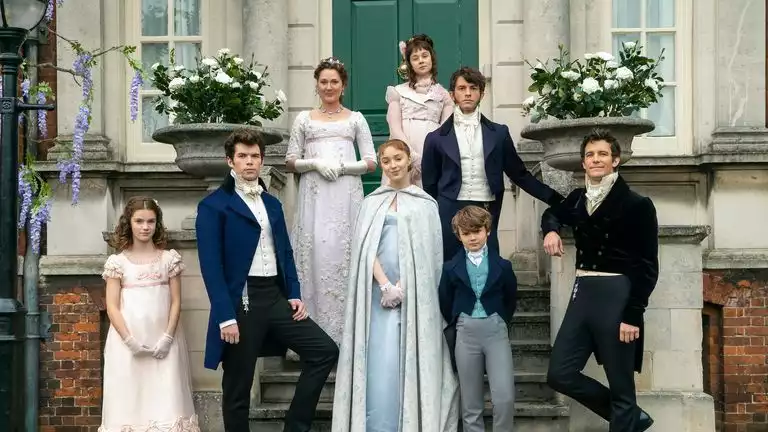
Is Netflix's "Bridgerton" based on a true story?
If you're the kind of person who logs on to Netflix with a penchant for over-the-top updos and sexy 19th-century romance, you probably spent the week after Christmas in a strange period of limbo watching "Bridgerton" (opens in a new tab) on Netflix. There's a reason for that: this new series is not only the perfect mix of period drama (opens in new tab), steamy romance (opens in new tab), and gossipy whodunnit, but the strict and often bizarre social customs of the time, albeit with a modern feminist twist, It is an accurate portrayal. Add to that executive producer Shonda Rhimes' (open in new tab) ability to bring to life multifaceted (and fictional) characters, and it's not hard to automatically assume that the series is based on a true story. [In reality, however, the history of the Bridgertons and the Fetherington family only goes back to the year 2000, when the first book in Julia Quinn's Bridgerton series of romance novels was published. Of course, that does not mean that the series is not rooted in fact. High-status families like the Bridgertons certainly existed and were forced to operate under such stifling social customs. Here is everything you need to know about the true story of the Bridgertons.
The family of the same name in the series (open in new tab) is a member of early 19th century London high society. The family is led by Violet, Viscountess Bridgerton, played by Ruth Gemmell, and Violet's eldest son Anthony (played by Jonathan Bailey). Rounding out the Bridgerton family are Violet's remaining children, conveniently named in alphabetical order: Benedict, Colin, Daphne, Eloise, Francesca, Gregory, and Hyacinth are Luke Thompson and Luke Newton, respectively, Phoebe Daimber, Claudia Jessie, Ruby Stokes, Will Tilston, and Florence Hunt. [The story of the Bridgertons is detailed in Quinn's series, one novel written about each of the Bridgerton children, a collection of "second epilogues" about each story, and two novel collections of Lady Whistledown's musings about social events. The book consists of. Quinn also mentioned in a recent interview with Shondaland (open in new tab) that he is currently working on a prequel to the Bridgeton series.
As far as Quinn and the showrunners know, that is not happening. Quinn, who also worked as a consultant on the TV adaptation of her novels, has previously (open in new tab) talked about how she dreamed up the Bridgerton family herself.
"Even though it's set in the 19th century, I wanted it to feel relatable. I wanted the audience to be able to identify themselves with the characters," Van Dusen told the Daily Express (opens in new tab). 'Bridgerton is neither a history lesson nor a documentary. As far as I know, there was no real Bridgerton in Regency London in 1813. Of course we are respectful of history, but we are not bound by it. What we're really doing is blending history and fantasy, and I think that's a really exciting way to do it."
Exactly. While Bridgerton's specific characters may be fictional, the circa-1813 London "ton" depicted in the series is very realistic, and the showrunners have hired a historical consultant who has consulted on numerous films and TV shows, including "The Favourite" and "Dutchess" Hannah Greig was hired to make Bridgerton's world as historically accurate as possible. [For example, the idea of an annual social season during which the so-called "marriage market" is held is a real one: beginning in the 17th century, high society families like the Bridgertons moved from their country mansions to the city and took their marriageable children to dinner parties, garden parties, balls, charity events, and spent about six months there. Graig told the Los Angeles Times (opens in new tab), "The purpose of these highly exclusive events was less to promote romantic relationships than to control the suitors, keeping money and power within a fairly small circle of society."
Moreover, Anthony's concern that his unmarried sister's reputation would be damaged if word got out that she had secretly met with Simon, Duke of Hastings (aka Leger-Jean Page (opens in new tab)) is also based on historical accuracy. 'A chaste young woman would never be alone with a man to whom she was not related by blood. She should be seen as not only chaste but pure," historian Amanda Vickery told the L.A. Times. 'Chastity, modesty, and obedience were preeminent among the feminine virtues. Sexual chastity must appear unquestionable or it will ruin you in the marriage market."
And despite the Georgian reputation for sparking something of a sexual revolution throughout England, Daphne and other Bridgerton women appear to have been completely ignorant of what was expected of them on their wedding night. Daphne's mother would no doubt have taught her the importance of being obedient to her husband and having an heir. But on the wedding night, she was expected to be a pure virgin. Any knowledge she might have had would have been carefully concealed," Vickery said, adding that Graig would have had little to hide, "because there was great concern about reading too much fiction that might give her lots of sexual ideas."
Watch "Bridgerton" on Netflix (opens in new tab)
.
Comments